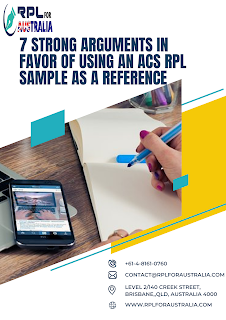10 Tips for Writing an Accurate Experience Reference Letter for ACS Skill Assessment
The Australian Computer Society (ACS) Skill Assessment is a crucial step for ICT professionals looking to migrate or work in Australia. One vital component of this process is the Experience Reference Letter, which plays a pivotal role in showcasing your skills and expertise. Crafting a compelling letter is essential to ensure a successful assessment. Here are 10 tips to help you write an accurate and impactful Experience Reference Letter for ACS Skill Assessment.
Understand ACS Guidelines:
Delve into the ACS guidelines thoroughly to comprehend the specific requirements for the Experience Reference Letter. Tailor your letter to address essential criteria such as the duration of employment, roles, and responsibilities, and their relevance to the nominated occupation.
Use the Correct Format:
Begin with a well-structured format, incorporating the company letterhead for authenticity. Clearly state your position, and inclusive dates of the Employment Reference Letter for Skill Assessment Australia, and provide a comprehensive breakdown of your roles and responsibilities. A standardized format lends professionalism to your letter.
Highlight Relevant Experience:
Prioritize experiences directly pertinent to the nominated occupation. Emphasize significant projects, tasks, and achievements that not only showcase your technical skills but also align with the specific requirements outlined by ACS.
Quantify Achievements:
Strengthen your letter by quantifying your achievements with measurable outcomes. Whether it's the successful completion of a project, meeting tight deadlines, or improving system efficiency, providing numerical values adds substance to your claims.
Be Specific and Detailed:
Go beyond a surface-level description of your roles. Offer a detailed account of your day-to-day responsibilities, emphasizing the technical aspects of your work. Use specific examples to vividly illustrate your contributions.
Include Technical Skills:
Enumerate the technical skills you actively applied during your employment. This serves a dual purpose of showcasing your proficiency in relevant technologies and aiding ACS assessors in comprehending the depth of your technical knowledge.
Ensure Accuracy:
Accuracy is paramount to the success of your assessment. Verify all details, including dates, project specifics, and your job title. Eliminate any discrepancies to present a consistent and reliable employment history.
Provide Contact Information:
Foster transparency by including the contact information of your immediate supervisor or HR representative. This ensures that ACS assessors can easily reach out for verification or additional details, if necessary.
Use Professional Language:
Maintain a professional and articulate tone throughout your letter. Communicate your contributions without resorting to unnecessary technical jargon, making it easy for assessors to grasp the significance of your role.
Proofread Thoroughly:
Before submission, conduct a rigorous proofreading of your letter. Correct any grammatical errors, eliminate typos, and ensure clarity in your statements. A well-polished, error-free document not only reflects positively on your professionalism but also enhances the overall impact of your submission.
In conclusion, a well-crafted Experience Reference Letter is instrumental in a successful ACS Skill Assessment. By adhering to these 10 tips, you can ensure that your letter accurately reflects your skills and experience, increasing the likelihood of a positive assessment outcome. Remember, the key is to provide a comprehensive and truthful account of your Employment Reference Letter for Skill Assessment Australia, aligning it closely with the requirements of the nominated occupation. Good luck on your ACS Skill Assessment journey.


Comments
Post a Comment